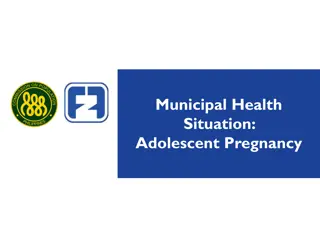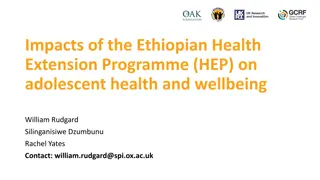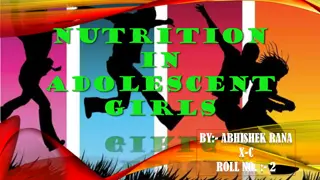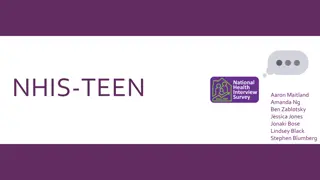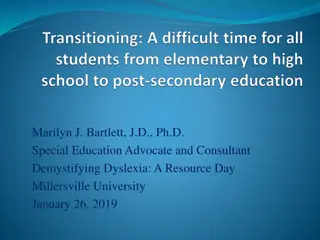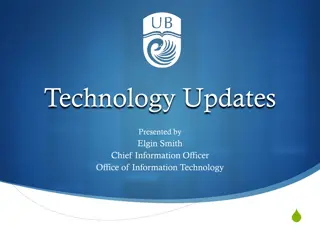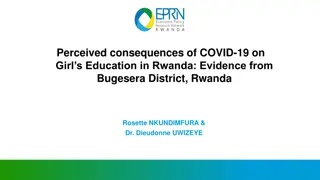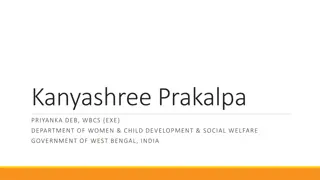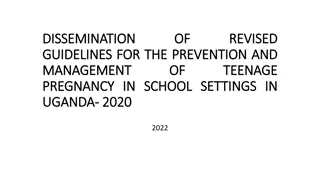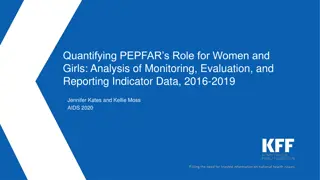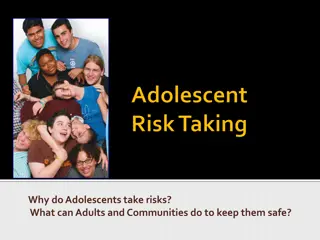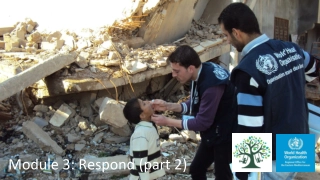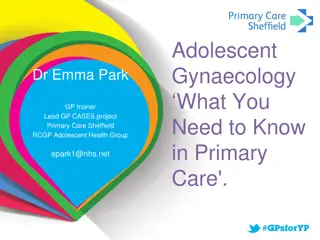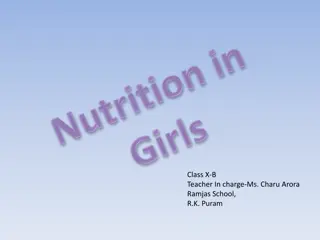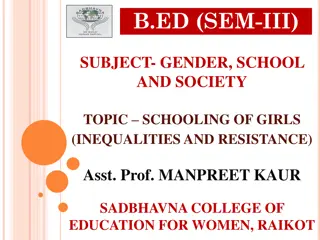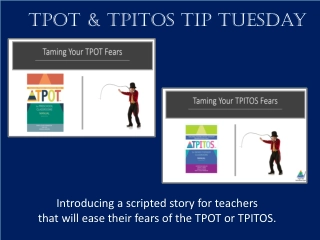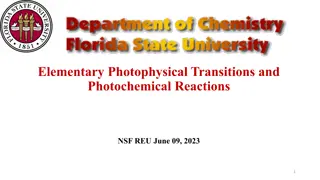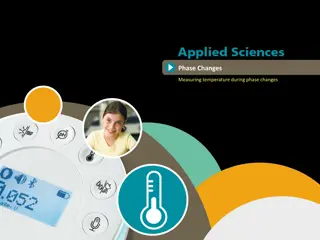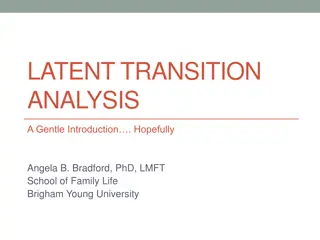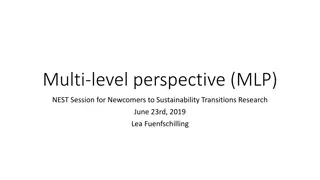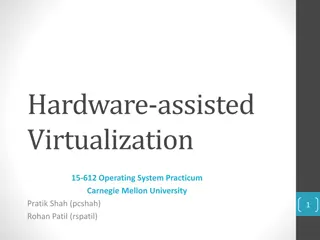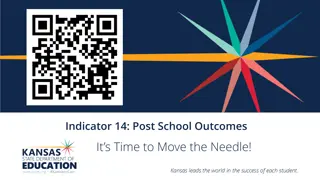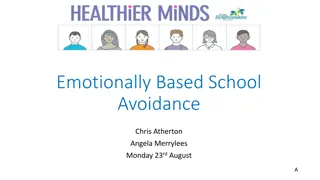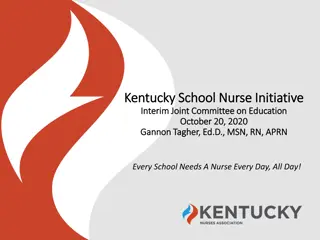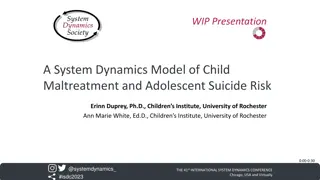Challenges in School-to-Work Transitions for Adolescent Girls
The transition from school to work poses challenges for adolescent girls, impacting their access to secure, productive, and safe livelihood opportunities. Disparities in education completion rates contribute to gender inequalities, with young women facing lower-paid work without secondary education. Women with only primary schooling often find themselves in the informal sector, receiving minimal pay. Barriers exist in accessing secure and fulfilling work, highlighting the need for improved educational opportunities and skills training for young girls to enhance their transition to the workforce.
- School-to-Work Transitions
- Adolescent Girls
- Livelihood Opportunities
- Gender Inequality
- Education Disparities
Download Presentation

Please find below an Image/Link to download the presentation.
The content on the website is provided AS IS for your information and personal use only. It may not be sold, licensed, or shared on other websites without obtaining consent from the author. Download presentation by click this link. If you encounter any issues during the download, it is possible that the publisher has removed the file from their server.
E N D
Presentation Transcript
School to work transitions for School to work transitions for adolescent girls adolescent girls Professor Pauline Rose Director, Research for Equitable Access and Learning (REAL) Centre University of Cambridge
Skills for livelihood opportunities Skills for livelihood opportunities Livelihood opportunities: Secure: not vulnerable to short-term change Productive: that it pays a decent and fair wage. Safe: free from exploitation and violence Fulfilling: that they have some choice in the type of work they are able to engage in. Skills needed for gaining livelihood opportunities: Foundational transferable technical and vocational. For the majority of adolescents (age 10 For the majority of adolescents (age 10- -19), the expectation is that these skills will be primarily be accessed through schooling. skills will be primarily be accessed through schooling. 19), the expectation is that these 2
Many of most disadvantaged in sub Many of most disadvantaged in sub- -Saharan Africa don t make it to secondary school don t make it to secondary school Saharan Africa Primary completion rate in sub-Saharan Africa Secondary completion rate in sub-Saharan Africa Poorest girl Poorest boy 90 90 Richest girl 85 80 80 Richest boy 77 70 Average 70 70 68 65 63 60 60 57 50 50 47 47 43 40 40 40 32 30 30 26 23 20 20 19 18 16 10 10 6 6 6 6 5 5 0 0 2000-2005 2010-2015 2000-2005 2010-2015 Source: WIDE database 3
One One- -quarter of young people aged 15 to 24 in poor quarter of young people aged 15 to 24 in poor countries are unable to read a single sentence countries are unable to read a single sentence Source: 2013/4 EFA Global Monitoring Report 4
Young women who have not completed secondary Young women who have not completed secondary education more likely to be in low paid work education more likely to be in low paid work 5
Women with no more than primary schooling in Women with no more than primary schooling in informal sector paid the least informal sector paid the least 6
Barriers to accessing secure, productive, safe and Barriers to accessing secure, productive, safe and fulfilling livelihood opportunities fulfilling livelihood opportunities Limited opportunity to develop foundational skills in school Gendered expectations and norms affecting aspirations Gender discrimination in labour market Early marriage and pregnancy Harassment and violence Lack of financial savings and credit Lack of peer networks and role models
Examples of evidence on what works Examples of evidence on what works Educate! In Rwanda and Uganda addresses mismatch between education and livelihood opportunities, resulting in increased income and business ownership for female participants. CAMFED s livelihoods programme in Malawi, Tanzania, Zambia and Zimbabwe supports highly marginalised rural women in sub- Saharan Africa as they complete secondary education to set up their own businesses, resulting in increased incomes and savings. An intervention in Kenya for secondary school girls provided HIV and sexual health education to combat child marriage and teenage pregnancy, resulting in reduced teenage pregnancy. 8
Evidence on what works Evidence on what works BRAC s Empowerment and Livelihoods for Adolescents programme in Sierra Leone provides health education, vocational training and microcredit for adolescent girls, resulting in increased learning and reduced teenage pregnancy. The Social and Financial Empowerment programme in rural Bangladesh provides girls clubs, financial literacy, livelihood and life skills training, increased financial literacy, ownership of poultry and small livestock, and involvement in economic activities. The Child Hope programme From Sexual Exploitation to Education for Ugandan Children helps girls in sex work to find alternative livelihoods where they are less vulnerable to violence. The programme resulted in girls not returning to unsafe work. But many interventions short But many interventions short- -term and small scale, and don t term and small scale, and don t address wider gender discrimination in school and address wider gender discrimination in school and labour labour market market 9




